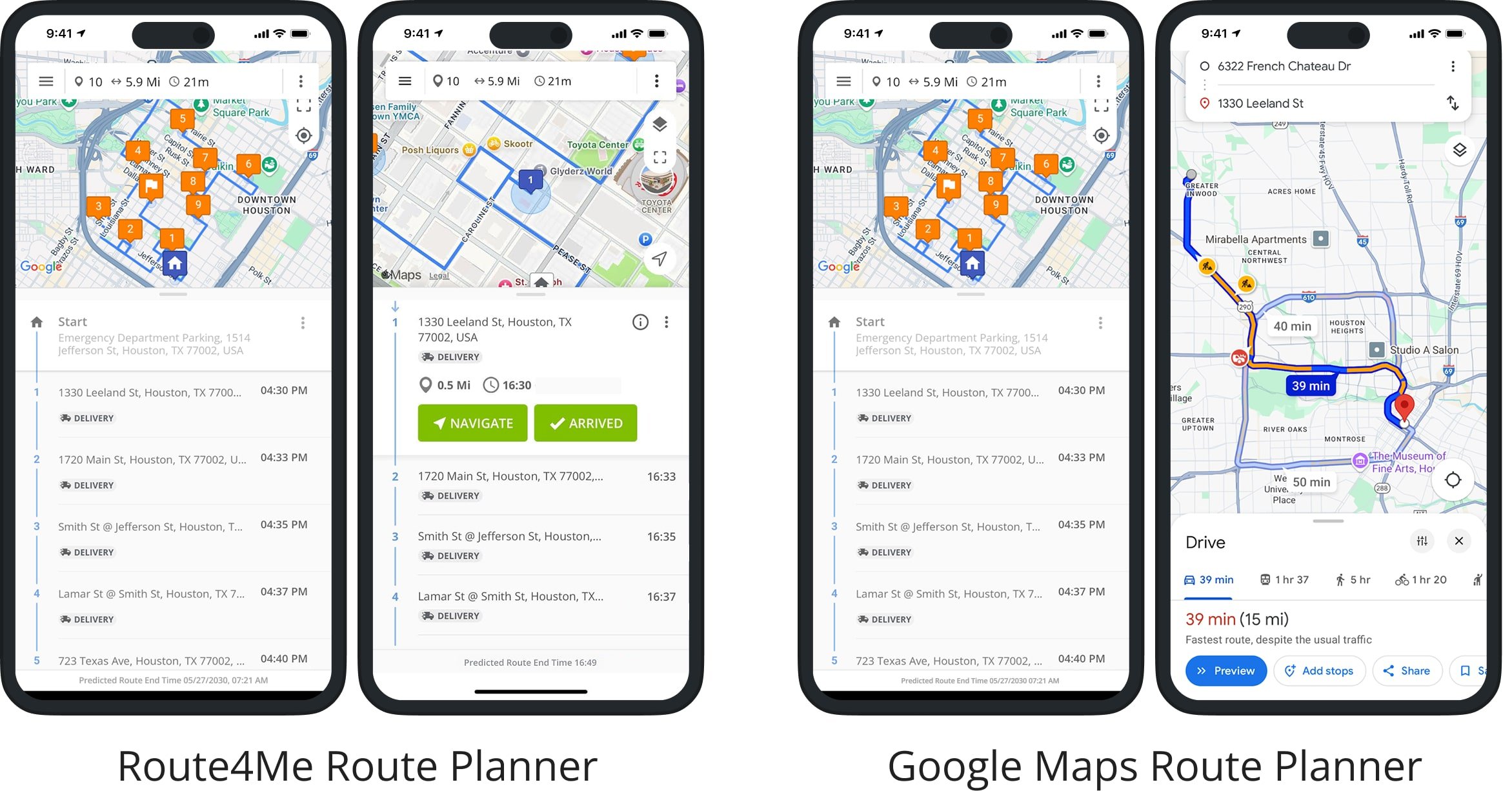How To Plan A Route With The Google Maps Route Planner
Planning multiple stops efficiently is critical for delivery, logistics, and field service operations. The Google Maps route planner is popular for personal navigation, but it has limits for commercial multi-stop routes. This guide explains how to plan routes using Google Maps, highlights its limitations for businesses, and shows how Route4Me route optimization software can automate multiple stop route planning to save time, reduce costs, and improve fleet performance.
Table of Contents
Plan A Multi-Stop Route With Google Maps Route Planner
Google Maps allows you to plan up to 10 stops per route and manually arrange them. It’s free and available on smartphones and desktops, making it useful for personal trips or small-scale deliveries. However, Google Maps cannot automatically optimize routes, meaning manual sequencing is required to find the fastest or most efficient path.
- Install and open the Google Maps route planner app: Google Maps comes pre-installed on most devices, or download it from the App Store or Play Store.
- Add the first destination in the Google Maps route planner: Enter the address or select from suggested locations, then tap “Directions“. Your starting point defaults to your current location.
- Add multiple stops: Tap “Add stop” to include additional addresses, up to 10 stops. Rearrange stops manually if needed.
- Get driving directions: Tap the Car Icon to see directions for your entire route.
- Navigate the route: Tap “Start” to begin turn-by-turn navigation. Stops can be edited mid-route by dragging them into a new order.
Google Maps For Multi-Stop Routes: Pros And Cons
Google Maps Route Planner is a popular free route planner that lets you create a multi-stop route planner for personal or small-scale trips. While you can optimize routes with Google Maps manually, its lack of automated route optimization makes it less ideal for commercial delivery or logistics operations.
Pros:
- Free and widely accessible
- Offers walking, driving, and public transport directions
- Street View and indoor maps for better location context
- Voice GPS navigation available offline
Cons:
- Limited to 10 stops per route
- Cannot optimize multi-stop routes automatically
- Does not account for commercial vehicle restrictions, weight limits, or road rules
- Manual sequencing required for efficiency
Limitations Of Google Maps For Delivery And Commercial Use
For businesses handling multiple drivers, trucks, or more than 10 stops, Google Maps is insufficient. Manual optimization is time-consuming and error-prone. Commercial fleets require multi-stop route planning software that factors in delivery time windows, vehicle capacity, traffic, and customer priorities.
Why Use Route4Me For Multi-Stop Route Planning
Route4Me automates route planning for delivery and field service operations. It:
- Optimizes routes based on cost, time, and vehicle constraints
- Supports large fleets and multiple drivers
- Reduces planning time from hours to seconds
- Minimizes fuel, labor, and operational costs
- Improves customer satisfaction through timely deliveries
Route4Me Vs Google Maps Route Planner
Unlike Google Maps, Route4Me automatically sequences addresses and calculates the fastest, most cost-efficient multi-stop routes. Businesses save time, reduce overtime, and maximize fleet utilization, making Route4Me the preferred solution for commercial route planning.
Next Steps And get started
Experience the benefits of Route4Me’s multi-stop route planning app for your business. Claim a Get Started to optimize routes, reduce operational costs, and increase delivery efficiency.
All the trademarks, logos, and brand names on this page are for identification purposes only. We do not endorse these trademarks, logos, and brand names. All the trademarks, logos, and brand names are the property of their respective owners. If any of the trademarks, logos, and brand names are your property or the property of your company, and you would like us to remove them from our website, please contact us at [email protected] to submit your request.
Last Updated:

